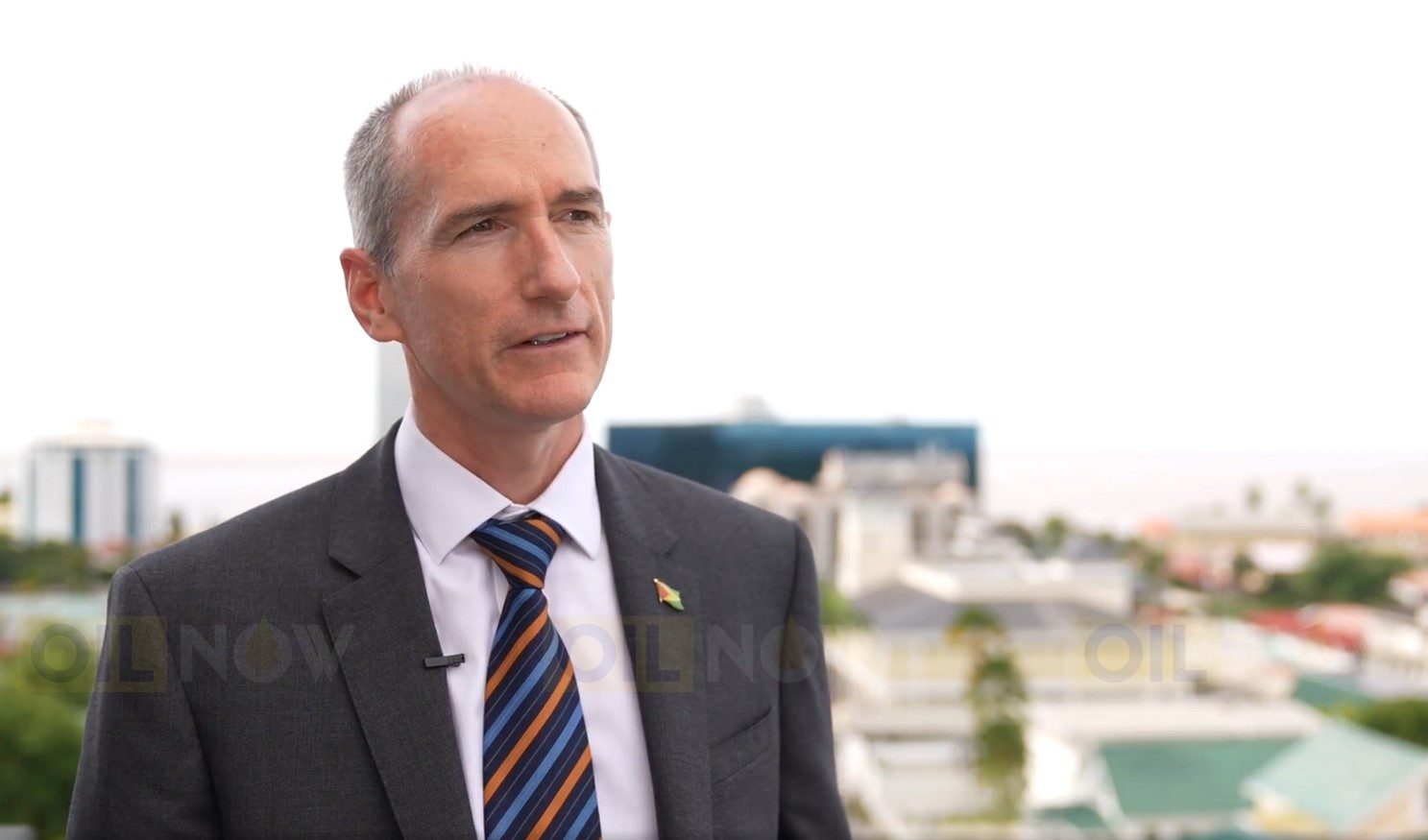ExxonMobil Guyana has outlined development plans to place six floating production vessels offshore Guyana by 2027 and see potential for 10 to be in operation in the Stabroek Block by the end of the decade.
President of the company, Alistair Routledge, said that these investments are based on the Stabroek Block Production Sharing Agreement (PSA) signed in 2016. He explained that if those terms are changed, the company’s investment decisions are therefore altered.
The ExxonMobil official made the argument in defense of the stability of the contract, as some have called for it to be renegotiated.
“We invest with a 20–30-year time horizon. It’s incredibly difficult to make any future decisions if you feel that the terms are constantly going to be changed,” Routledge said in the 26th episode of Access ExxonMobil, aired on Tuesday. “So, it is fundamental to our industry, in particular, that has these long investment timelines, that we have stability in our contracts.”
Treasurer at ExxonMobil Guyana, Katrina Masters also weighed in, giving a description of the fiscal terms in the PSA. She explained that there is a 75% cost recovery ceiling that allows the contractor group to recover its investments.
“By allowing the contractor to recover 75%, we’re incentivised to spend more upfront to develop as much of the resource as possible, which is ultimately going to result in more profit oil for both the government and the contractor,” Masters explained.
After cost recovery, the profit oil barrels are split 50/50 between the government and the co-venturers. The co-venturers are also required to pay the government 2% royalty on all petroleum produced and sold.
She said Exxon is incentivised by the terms of the agreement to explore, develop, and bring the resource to the surface so that it can be sold, making money for the country and the co-venturers.
Guyana’s Natural Resource Fund has received more than US$1.4 billion in oil revenues since oil production began.
ExxonMobil is the operator of the Stabroek block with a 45% stake, while Hess has 30% and CNOOC has 25%.



